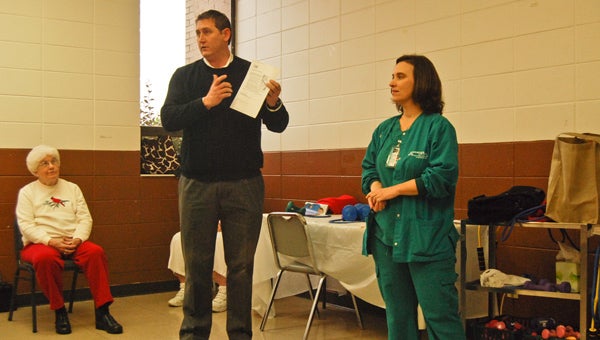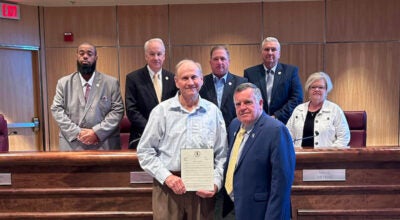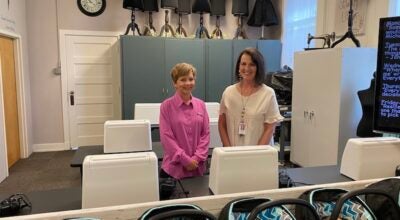Seniors receive tips on healthy eating
Published 3:46 pm Wednesday, January 16, 2013

Community relations manager Ray Boyd and Hospice Advantage clinical nurse Beth Crowder gave a basic overview of healthy eating Wednesday morning to a group from Senior Connection.
Serving portions, tips while grocery shopping and healthy alternatives to meal planning were part of a brief presentation Wednesday morning from two representatives of Hospice Advantage to members of Senior Connection.
Community relations manager Ray Boyd and Hospice Advantage clinical nurse Beth Crowder gave a basic overview of healthy eating and provided answers to questions from those who were curious about myths regarding food.
Boyd started his discussion by asking if anyone in the crowd had any questions before he started.
One lady asked if diabetics were able to eat honey pointing out that some jars of honey boast about natural sugar.
Boyd said even though the label said “natural” it still contained natural sugar and reminded everyone that everything in moderation is something to strive for.
“I wouldn’t recommend taking honey out of your diet altogether if you are diabetic but you do need to remember that it is still a sugar,” Boyd said. “Moderation simply means you have to watch how much you eat of it.”
Boyd encouraged everyone to drink more water noting that it is impossible for individuals to consume too much water.
He then took out several canned items and pointed out things to look for while grocery shopping including understanding how to properly read the labels on the back of most canned goods.
Boyd used a can of spaghetti and meatballs with the servings per container listed for two people but the nutrition facts representing one serving.
“The sodium in this can is alarming,” Boyd said. “If you ate this entire can of spaghetti and meatballs you would be consuming 88 percent of your daily sodium intake.”
Boyd said serving portions on a lot of labels were misleading causing many people confusion about how much food they were actually consuming.
Another lady in the crowd asked about the proper portion size when eating nuts like walnuts, almonds or Brazil nuts.
Boyd said a general rule of thumb to remember is anything you can fit in the palm of your hand is a good portion.
Another tip Boyd and Crowder said most people don’t remember when thinking about healthy eating is to eat more than three meals a day.
“It is actually better to eat four or five little meals to jumpstart your metabolism,” Boyd said. “Eating breakfast in the morning lights the fire for your metabolism to get going for the day.”
Several people wanted to know what carbohydrates to avoid when diabetic.
Crowder said generally anything white in color including rice, potatoes and breads.
“Pretty much if it tastes really good then it is probably bad,” Crowder said. “You want to avoid those types of food because they will eventually turn into sugars which are not good for a diabetic.”
Crowder concluded the presentation by pointing out that individuals taking the blood thinner drug Coumadin needed to avoid eating green vegetables that contained high amounts of vitamin K which also included foods such as herbs, spring onions and prunes.






